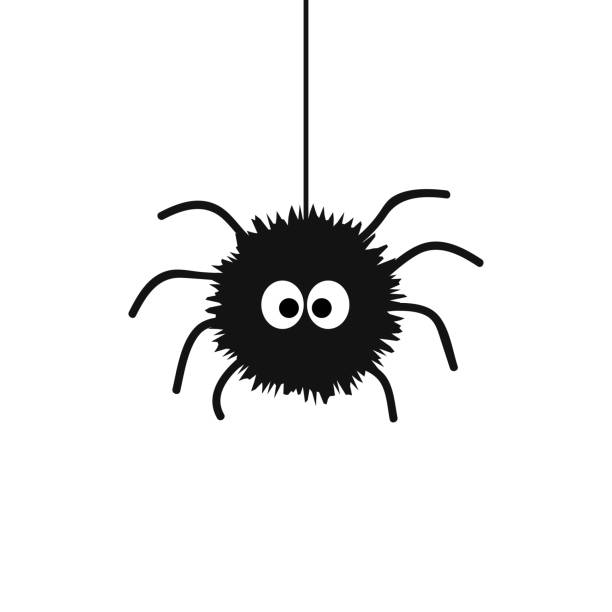Psychodynamic Approach

Psychodynamic Approach
Assumptions of the Psychodynamic approach:
- The main assumption of the psychodynamic approach is that all behaviour can be explained in terms of the inner conflicts of the mind.
- Freud highlights the role of the unconscious mind, the structure of personality and the influence that childhood experiences have on later life.
- Freud believed that the unconscious mind determines most of our behavior and that we are motivated by unconscious emotional drives.
Tripartite Personality
According to Freud our personality is composed of three parts:

Id:
it is the biological part (instincts and drives) of the personality. It is present at birth. The Id is motivated by the pleasure principle; it demands instant gratification of its needs.

Ego:
Develops around the age of 2 years. It is motivated by the reality principle. It mediates the conflicts between the Id and superego. It uses defence mechanisms to achieve this.

Superego:
Develops around the age of 5 years. It is motivated by the morality principle. It punishes the ego with guilt for “wrong doing”. The morality principle is developed by identifying with the same moral standards of the same sex parent. This is because the development of the superego happens when the child has successfully progressed through the Phallic stage (Oedipus complex). This success will only happen when the child identifies with the same sex parent. Please see an example of this identification in the conclusions part of the plumber fantasy in the Little Hans study.

To be mentally healthy the ego has to be able to balance the demands of the ego and the superego. If the superego is dominant, the individual might develop a neurosis e.g. depression. If the ID is dominant, the individual might develop a psychosis e.g. schizophrenia.
Tripartite of the mind – memory strategies:
ID is solely in the unconscious mind – I remember this as being ‘In Deep’ – ID
Id = Draco Malfoy – Selfish principle, will do anything in its power to get what it wants
Ego = Dumbledore – The compromising principle, will try to work out a solution that pleases all
Super ego = Hermione – Morality principle, is uptight and follows the rules rigidly
The Mind
The mind is divided in three parts:

The conscious:
This is the part we are aware of and can access without any effort. It contains part of the ego.
The preconscious/subconscious:
This a part of the mind that contains our thoughts and memories which are not currently in our conscious awareness, but can be accessed if desired.
The unconscious:
This part of the mind cannot be accessed without the help of a trained psychoanalyst. It contains the superego and the Id.
When unconscious conflicts between the Id and the superego cannot be resolved by the ego they create anxiety. To reduce this anxiety we use defence mechanisms such as repression.
Defense Mechanisms
Repression:
Is used by the ego to keep disturbing memories out of the conscious mind and in the unconscious mind where they cannot be accessed, e.g. sexual or aggressive urges or painful childhood memories.
Examples:
An adult suffers a nasty spider bite as a child and develops an intense phobia of spiders later in life without any recollection of the experience as a child. Because the memory of the spider bite is repressed, he or she may not understand where the phobia originates.

A child, who faced abuse by a parent, later has no memory of the events but has trouble forming relationships.
Displacement:
An impulse or emotion is redirected from its original target to another one, e.g. being angry with your father and shouting at your little sister.
Examples:
A student who is angry about receiving a poor result on their test shouts at their mum when he’s asked to hoover the house.
Someone who is angry with their boss at work may go home and smash their TV
Denial:
The existence of unpleasant internal or external realities is denied and kept out of conscious awareness, e.g. having lost your job and yet you go to work every day.
Examples:
A smoker who refuses to accept that smoking is bad for them.

An individual who continuously spends money even when they have been informed that they are bankrupt.
Denial and repression are often confused and therefore it is important to distinguish between the two. Denial is refusing to admit the truth about something whereas Repression is the act of restraining something. In denial, the person has some awareness of the truth but they refuse to accept it, in repression, the individual does not have conscious access to the event/memory,
More Proof of the Unconscious Mind: Freudian Slip:
Unconscious thoughts and feelings can transfer to the conscious mind and slip out during a conversation. These are known as Freudian slips or slips of the tongue. A Freudian slip is when we reveal what is really on our mind by saying something we didn’t mean to.
For example, a woman might mean to tell her friend, “I am so in love with Alex.” But instead of saying Alex’s name, she might say the name of her ex-boyfriend instead. This might imply that she still has unconscious desires for her ex-boyfriend.
Freud believed that slips of the tongue provided an insight into the unconscious mind and that there were no accidents, every behaviour (including slips of the tongue) was significant.
Psychosexual Stages of Development
| STAGE | SOURCE OF PLEASURE | OUTCOME |
|---|---|---|
| Oral (0-1year) | Mouth – sucking, swallowing etc. | If forceful feeding, deprivation or early weaning occur then fixation could lead to oral activities (e.g. smoking), dependency, and aggression. |
| Anal (1-3 years) | The anus – withholding or expelling faeces. | If toilet training is too harsh or too lax then fixation could lead to obsessiveness, tidiness, meanness; or to untidiness and generosity. |
| Phallic (3-5 years) | The penis or clitoris – masturbation. | If abnormal family set-up leading to unusual relationship with mother/father then fixation could lead to Vanity, self-obsession, sexual anxiety , inadequacy, Inferiority, envy, |
| Latent (5-puberty) | Sexual drives are repressed. | Fixation does not happen in this stage. |
| Genital (puberty-death) | The genitals. The adult derives pleasure from masturbation and sexual intercourse. | Fixation at this stage should occur in a mentally healthy adult. |
Memory strategy for Psychosexual stages:
Old, Aged, Pensioners, Love, Guiness = Oral, Anal, Phallic, Latency, Genital
Freud – Little Hans
Background:
Hans was described as a cheerful and straightforward child, but when he became ‘ill’ (developed his phobia) it was obvious that there was a difference between what he said and what he thought. Freud thought this was because things were going on in Hans’ unconscious mind of which he was unaware.
Little Hans was referred to Freud by his father, a keen supporter of Freud’s work. Freud therefore decided to help Hans by interpreting his behaviour and telling him why he was thinking and behaving as he was. This is a process known as psychoanalysis.
Freud used this study to support his ideas about the origins of phobias, his theory of infantile sexuality and the Oedipus complex, and his belief in the effectiveness of psychoanalytic therapy.
Research method:
- A case study which documented the developments in Hans’ fears from when he was 3 years old until he was 5.
- Data was gathered by Little Han’s father (a firm believer of Freud’s ideas) regularly observing and questioning Hans. He then sent records of the events and conversations to Freud who interpreted the information and replied to Little Hans’ father with advice on how to proceed.
Observations made by Little Hans Father:
- Just before Hans was 3 years old, Hans started to show a lively interest in his ‘widdler’ and the presence/absence of this organ in others – human and non-human.
- At this time he had a tendency to play with his ‘widdler’, bringing threats from his mother to send for Dr A. to cut it off!
- When he was 3 and a half, Hans gained a baby sister, Hanna, whom he resented and subsequently, subconsciously, wished his mother would drop in the bath so she would drown.
- Later Hans developed a fear of being bitten by white horses. This seemed to be linked to two incidents:
(i) Overhearing a someone say to a child, “Don’t put your finger to the white horse or it will bite you.”
(ii) Seeing a horse that was pulling a carriage fall down and kick about with its legs.
Both before and after the development of the phobia of horses, Hans would get anxious when his mother would go away. Hans was also prone to fantasies and daydreams. These included:
– The giraffe dream: In this fantasy there was a big giraffe in the room and a crumpled one: and the big one called out because I took the crumpled one away from it. Then it stopped calling out: and I sat down on top of the crumpled one.
– The plumber fantasy: In this fantasy, he described how a plumber came and first removed his bottom and widdler and then gave him another one of each, but larger.
Having received ‘help’ from his father and Freud and after the parenting fantasy, both the ‘illness’ and analysis came to an end.
Freuds Interpretations of the observations:
- Little Hans’ fear of horses was considered by Freud as an unconscious fear of his father. Freud explained that the fear of horses was an unconscious fear of his father and Hans had associated this with the Horse because the dark around the mouth of a horse + the blinkers resembled the moustache and glasses worn by his father. He was fearful of his father due to experiencing castration anxiety. This fear happens during the Oedipus complex where the young boy fears that the father will find out about his sexual desires for the mother, and therefore cut his penis off. This fear was reinforced even further when hands was told to stop touching his ‘widdler’ otherwise it would be cut off!

- Hans’ fascination with his ‘widdler’ was because he was experiencing the Oedipus complex. The focus of pleasure at this stage is around the genital area which is why Hans showed a great interest in his own penis and other people genitals.
- Hans’ daydream about giraffes was a representation of him trying to take his mother away from his father so he could have her to himself which according to Freud was further evidence to support the idea that Little Hans was going through the Oedipus complex.
- Hans’ fantasy about the plumber was interpreted as him now identifying with his father and having passed through the Oedipus complex. The idea was that the replacement of a bigger widdler was the unconscious understanding of Hans becoming more like his father. Freud explains that prior to identification, Hans will see his father as a rival, and wants to get rid of him. The father, however, is far bigger and more powerful than Hans, and so the child develops a fear that, seeing him as a rival, his father will castrate him. Because it is impossible to live with the continual castration-threat anxiety provided by this conflict, the young boy develops a mechanism for coping with it, using defense mechanism known as identification. He stresses all the ways that he is similar to his father, adopting his father’s attitudes, mannerisms and actions, feeling that if his father sees him as similar, he will not feel hostile towards him.
Psychoanalysis – Talking therapy
Psychoanalysis is defined as a set of psychological theories and therapeutic methods which were developed bt Freud. The primary assumption of psychoanalysis is the belief that all people possess unconscious thoughts, feelings, desires, and memories.
The aim of psychoanalysis therapy is to release repressed emotions and experiences, i.e., make the unconscious conscious. It is only having a cathartic (i.e., healing) experience can the person be helped and “cured.”
Psychoanalysis has been used to help people with Depression. In psychoanalysis Freud would have a patient lie on a couch to relax, and he would sit behind them taking notes while they told him about their dreams and childhood memories. It is a lengthy process, involving many sessions with the psychoanalyst and could last several years. The psychoanalyst uses various techniques as encouragement for the client to develop insights into their behaviour and the meanings of symptoms. By developing a greater understanding of themselves, they are able to take control, rather than being controlled by their unconscious mind.
Evaluation
Strengths:
- Useful applications: The psychodynamic approach has given rise to one of the first talking therapies. The basis of Psychoanalysis is still used today to help people with mental health issues such as depression. As outlined above, psychoanalysis aims to release repressed emotions and experiences, i.e., make the unconscious conscious. This is done by talking to the person for many hours and trying to get them to talk about past experiences, childhood and their dreams. Bringing repressed (unconscious) emotions to the conscious is important in helping the individual to address underlying issues that they may not have considered or been aware of before. This cathartic (i.e., healing) experience can help the the person to have a healthier mind.
- Research to support: The Little Hans study was Freud’s main evidence to support his ideas of the unconscious mind and the Oedipus complex as part of the psychosexual stages. Little Hans was suffering from a fear of horses. Freud explained that the fear of horses was an unconscious fear of his father and Hans had associated this with the Horse because the dark around the mouth of a horse + the blinkers resembled the moustache and glasses worn by his father. He was fearful of his father due to experiencing castration anxiety. This fear happens during the Oedipus complex where the young boy fears that the father will find out about his sexual desires for the mother, and therefore cut his penis off. However, this research provided very little support for the psychodynamic approach. Freud did not collect the data first hand, and instead Hans father wrote letters to Freud providing anecdotes of Hans behaviour. Han’s father was a keen supporter of Freuds, and therefore may have been biased about the information he sent to Freud. In addition, Freuds interpretations are purely subjective. Maybe Hans dreamt about a giraffe because he went to the zoo a few days before (this is actually true by the way)
- Further Research to support: One of the very influential concept put forward by Freud is the lasting importance of childhood on later life and development. This has been heavily supported by research today. For example, in the attachment course we learn about the Internal Working Model and how previous relationships with your parents can effect later relationships. Bailey (2007) found that if mothers described poor attachments to their own parents in the interviews, they were also more likely to have children who were poorly attached in the observation. This association was also found in securely attached mother’s and babies. Although there are some elements of Freuds theories that are very much discredited today, this particular theory has been supported time and time again. Bowlby’s 44 thieves study also shows how relationships with parents can impact a child turning to crime later on in life.
- Holistic: It recognises the influence of social and cultural factors as it proposes that we are driven by innate, biological instincts (nature) but that the way they are expressed is shaped by our social environment (nurture) e.g. early childhood experience and the relationship with parents can effect behaviour later on in life.
Weaknesses:
- Subjective & Unscientific: The concepts of Id, ego and superego are very abstract and difficult to test experimentally so evidence is obtained from case studies (Little Hans). This has been highlighted in the research to support point above. In addition, the psychodynamic approach is not falsifiable (difficult to prove wrong) due to the theories being based on the unconscious mind i.e. a concept you cannot see or measure, it cannot be studied scientifically. Therefore, there is not sufficient evidence to prove the existence of Freud’s theories.
- Deterministic issues: The psychodynamic approach is determinist as it rejects the idea of free will. A person’s behaviour is determined by their unconscious motives which are shaped by their biological drives and their early experiences. However, it is unrealistic and unhelpful, to assume that the conflicts which lead to undesirable behaviours are unconscious and there is nothing a person can do about it. Freud believes that without a psychoanalyst, they are disempowered. Humanists like Carl Rogers take a more helpful approach by teaching individuals to be empowered so that they can resolve their own issues in the future. Freud assumes that individuals would need to come back to therapy every time they repressed something.
